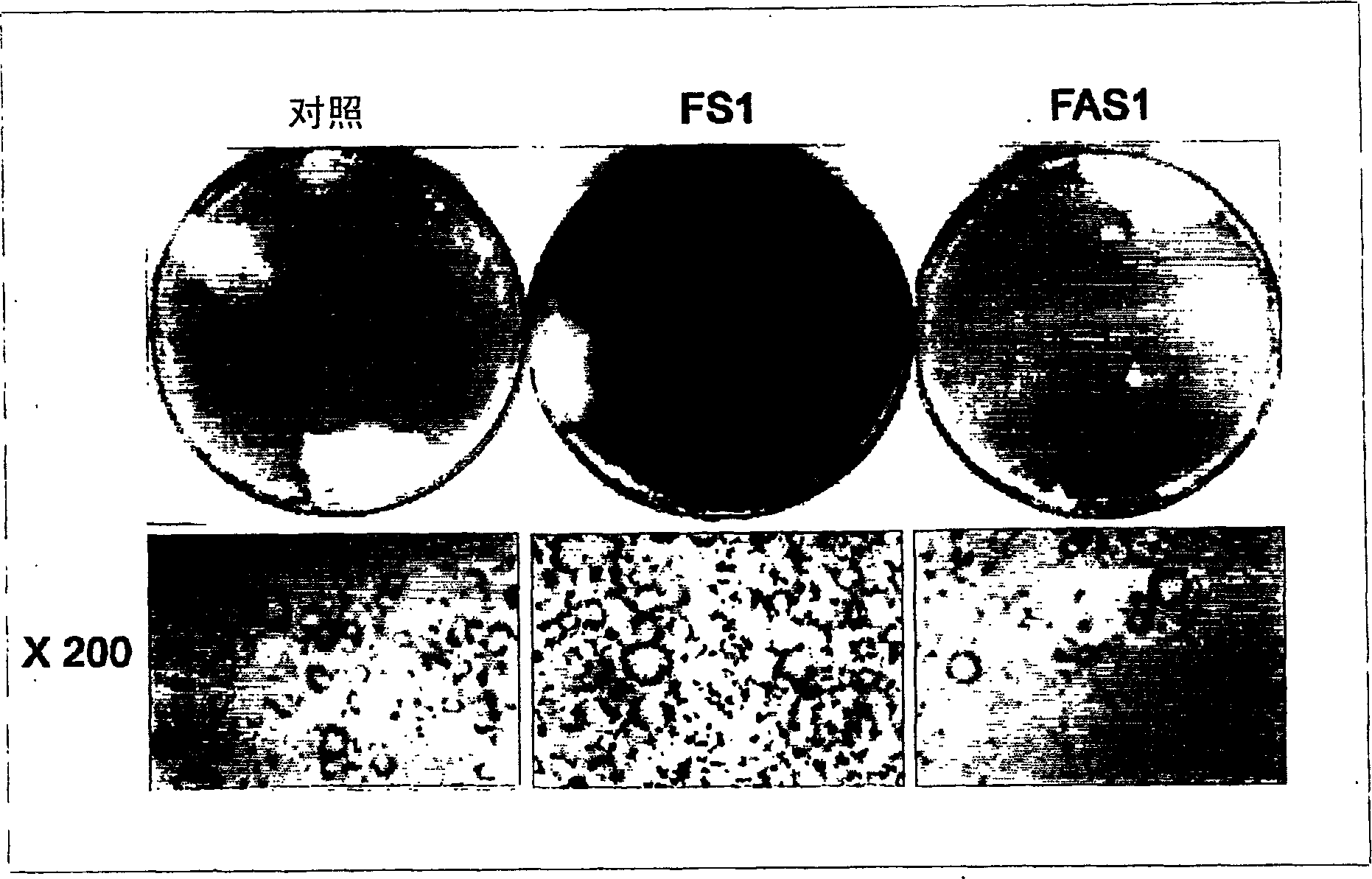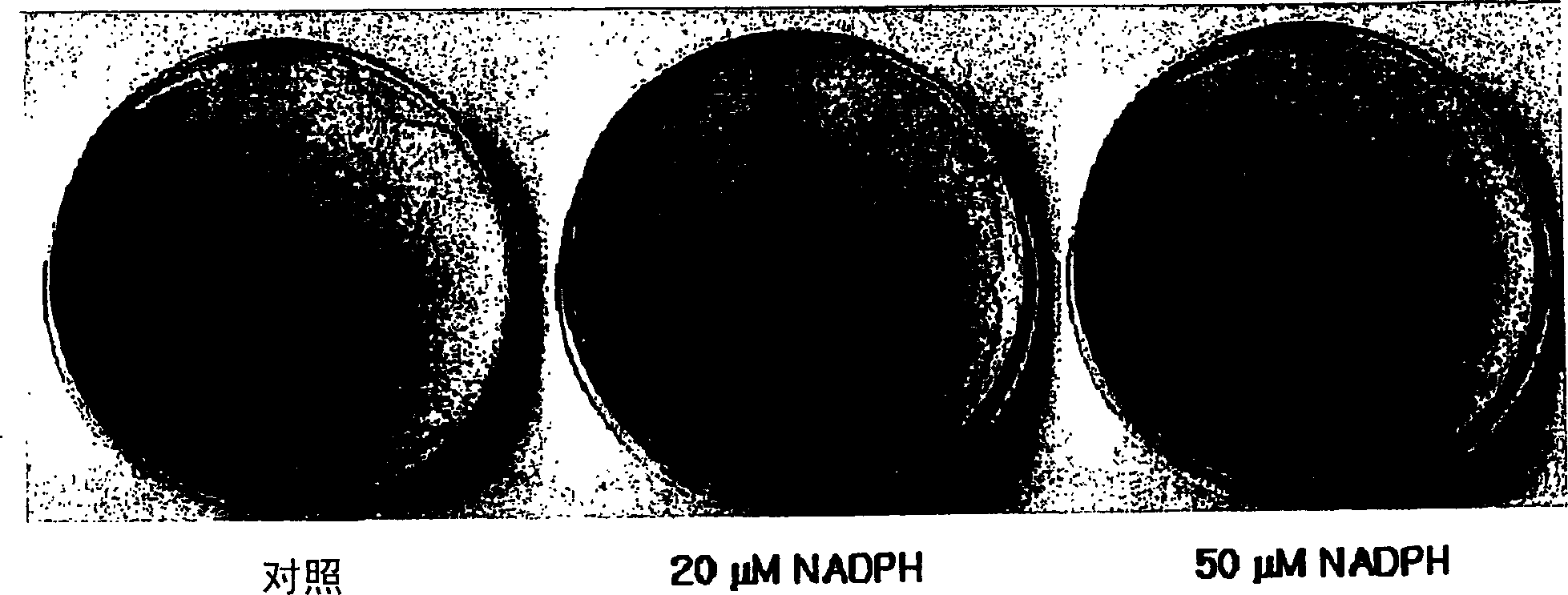Isocitrate dehydrogenase, gene thereof, and use of the same in the treatment of obesity, hyperlipidemia, and fatty liver in lipid biosynthesis
A technology of isocitrate dehydrogenase and biosynthesis, which can be applied in gene therapy, microbiological measurement/testing, medical preparations containing active ingredients, etc., and can solve the problems of lack of IDPc metabolic function, etc.
- Summary
- Abstract
- Description
- Claims
- Application Information
AI Technical Summary
Problems solved by technology
Method used
Image
Examples
preparation example Construction
[0047] 1. Preparation of fusion gene constructs
[0048] In order to permanently express the IDPc gene, the gene needs to be integrated into the genome of the animal. For this purpose, it is first necessary to construct recombinant constructs capable of expressing the gene of interest in mammals. In the resulting fusion gene construct, expression of the gene of interest is under the control of an appropriate promoter gene. The term "fusion gene construct" as used herein refers to a functional combination of genes used in a specific biotransformation, which mainly includes at least one structural gene, and at least one sequencer for controlling the expression of the structural gene. Functional regulatory elements.
[0049] Typically, cis-acting regulatory elements can be in the form of promoters, enhancers, introns, 5'-UTRs (untranslated regions), and 3'-UTRs. In the fusion gene construct, the cis-acting regulatory element can be located at any site within a distance of le...
Embodiment 1
[0076] Example 1: Isolation and sequencing of IDPc gene
[0077] 1-1. Isolation of mouse IDPc cDNA
[0078] A probe for identifying mouse IDPc cDNA was prepared using the recently reported rat IDPc cDNA (Jennings et al., J. Biol. Chem., 169, 21328-23134, 1994). The sense primer listed in the No. 1 sequence was synthesized based on nucleotides 532-550 of the rat IDPc cDNA gene, and the antisense primer listed in the No. 2 sequence was synthesized based on nucleotides 1263-1245. Separately, mRNA isolated from rat liver was converted into cDNA by using reverse transcriptase. Using these primers for PCR, first pre-denaturation at 94°C for 4 minutes; then perform 25 cycles: denaturation at 94°C for 1 minute, annealing at 50°C for 1 minute, and extension at 72°C for 2 minutes; finally further at 72°C For 10 min extension, 100 ng of cDNA library was used as template. As a result, a DNA sequence of 0.8 kb was amplified. This PCR product was cloned into pCR II (Invitrogen Co.). ...
Embodiment 2
[0087] Embodiment 2: Construction of the cell line transformed with IDPc gene
[0088] 2-1: Construction of recombinant retroviral vector for expressing IDPc gene
[0089] Regarding the expression of the IDPc gene in cells, the IDPc cDNA obtained from Example 1 was subcloned in sense and antisense orientations into the retroviral vector pLNCX (Miller, A.D. and Rosman, G.T., Biotechniques, 7, 980-990, 1989).
[0090] Both ends of the IDPc cDNA were cut with ClaI, and the cut DNA was ligated into a retroviral vector. The recombinant plasmid was introduced into E. coli DH5α and amplified by culturing the microorganism. The orientation of the cloned insert was identified by digestion with restriction enzymes. In the resulting recombinant vector construct, such as figure 1 Sense or antisense expression of IDPc cDNAs was directed by using the cytomegalovirus promoter as shown. The recombinant vector with IDPc cDNA inserted in the sense direction determined by restriction en...
PUM
 Login to View More
Login to View More Abstract
Description
Claims
Application Information
 Login to View More
Login to View More - R&D
- Intellectual Property
- Life Sciences
- Materials
- Tech Scout
- Unparalleled Data Quality
- Higher Quality Content
- 60% Fewer Hallucinations
Browse by: Latest US Patents, China's latest patents, Technical Efficacy Thesaurus, Application Domain, Technology Topic, Popular Technical Reports.
© 2025 PatSnap. All rights reserved.Legal|Privacy policy|Modern Slavery Act Transparency Statement|Sitemap|About US| Contact US: help@patsnap.com



